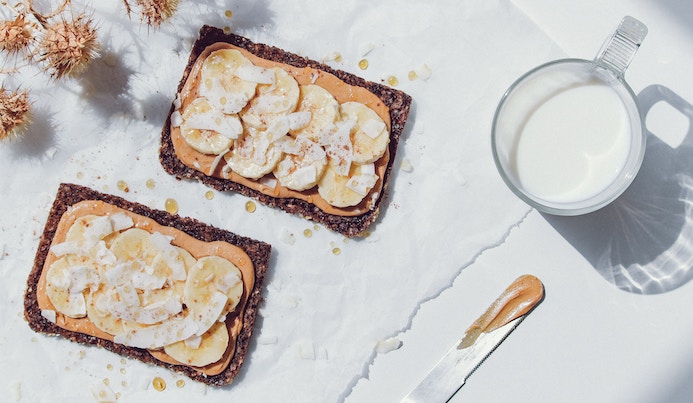
With obesity running rampant, we’re all looking for ways to trim the fat and improve the health of our bodies in the process. However, we rarely question the real nutritional value of anything that companies advertise as “healthy options.”
Turns out, these five healthy items actually aren’t as healthy as you’d think:
1. Almond Milk
If you’ve been ordering your favorite drink at Starbucks with almond milk because you thought it was “healthier,” think again. A serving of unsweetened almond milk contains about 40 calories, but 30 of them come from fat. However, most almond milk brands we purchase actually contain cane sugar and artificial flavoring, which can spike your glucose levels and cause a crash later. Furthermore, some types of almond milk contain as little as 2% almonds. Why do we even call it almond milk then?
Besides the nutritional deficits, almond milk production also creates tons of waste and excess water usage. To produce the milk, you must soak the almonds, ground them into pulp, then strain out the liquid. This leaves useless pulp with no place to use it. What’s more, the average farmer uses 25 gallons of water to produce just one serving of almonds. Talk about a waste of water!
After considering these factors, cow’s milk (or no milk at all) may be a better way to go.
2. Quinoa Pasta
Don’t misunderstand; quinoa is incredibly healthy. It contains far fewer carbs and sugars than regular pasta. It’s also filled with protein and amino acids. Unfortunately, most grocery store-bought quinoa pasta contains more cornflour than actual quinoa. Because of this, this pasta actually holds similar calories, carbs, and protein as regular wheat pasta.
Because of quinoa’s growth requirements, the US does not produce much of it, so it mainly originates from the mountains of Bolivia and Peru. Unfortunately, the increased demand pushes farmers to expand their production. This, in turn, negatively impacts other naturally-growing plants in the area, llamas, and also insects (due to increased pesticide use). So, your healthy pasta comes at a major price to the environment.
When purchasing quinoa, try buying brands that only contain quinoa flower and either advertise being Fair Trade organic or US-grown.
3. Veggie Chips
Believe it or not, those beautiful green and orange chips “made from vegetables” may not actually contain as many of them as you think. Most brands simply use artificial powders to provide that vibrant color. Potato starch and corn flour make up the bulk of the chips. Therefore, most veggie chips are just as fattening as those good old potato chips you diligently try to avoid.
Furthermore, all that factory processing and packaging adds additional pollutants to the air and eventually into landfills. In the end, you’re not eating any healthier, and you’re not helping to save the planet.
Instead, you can buy some beets, carrots, and sweet potatoes and make your own veggie chips at home!
4. Multigrain Bread
Did you know that the term “multigrain” merely indicates that multiple grains were used to make the bread? Refined grains end up heavily processed, meaning all the health benefits get stripped out. Thus, the majority of multigrain bread contains massive amounts of carbs and sugars, so they’re no better than plain white bread!
When purchasing bread, look for ones that list a whole grain as the number one ingredient. This ensures you receive the health benefits from that grain.
5. Avocados
Hate to break it to you, Millennial hipsters, but that avocado toast may not be as healthy as you think! Here’s why: Most people don’t realize what a tiny amount of avocado constitutes as a serving. The average grocery store avocado is actually three servings, with each serving containing around 80 calories. Even though the fat in avocados is considered a “good fat,” too much of it can cause weight gain.
Furthermore, avocado production wreaks havoc on the environment. The massive production of avocados in Mexico causes heavy deforestation. Also, since most avocados come from Mexico, significant amounts of chemicals and wood become part of the shipping process.
Just monitor how much of the green stuff you’re eating, and try to look for avocados grown in other regions.
Shocking finds, right? If nothing else, this list should encourage you to read labels more carefully! Personally, I’ll be checking nearly everything I buy at this point. Will this information change your grocery shopping habits? Let us know!
Photo by Ihssan Rami Azouagh on Unsplash


















